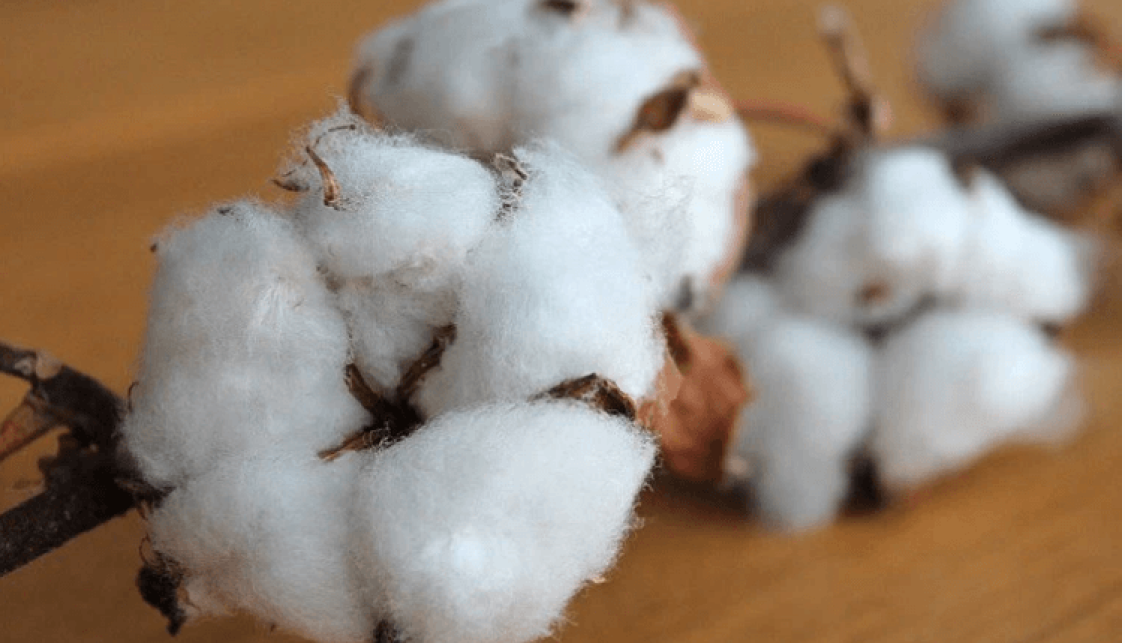Article: Organic Cotton: Is it a more sustainable choice?

Organic Cotton: Is it a more sustainable choice?
Organic. The word is an incredibly powerful marketing tool. Today, brands often use such eco-terminology to flaunt their sustainability efforts in an industry with an already outsized environmental footprint. We all want to believe organic cotton is more environmentally friendly than conventional cotton—but what are the differences between the two? Is it really better for the planet and the people that produce it? Read on to discover how the garment industry is adopting a global shift towards its new sustainable sister (and why you should too).
A BRIEF HISTORY OF COTTON
Conventional cotton is the most commonly used fiber on the planet, and it’s also the most heavily pesticized sprayed crop. This soft, fluffy staple fiber makes countless textile products, from velvet to velour, corduroy, chambray, jersey, flannel, and more. There’s no denying it—cotton dominates our closets whether we like it or not.
The material dates as far back as the 6000 B.C. in Peru, where the oldest known pieces of indigo-dyed cotton were found in the states north. Cotton is believed to have been domesticated in both the new and the old ages, becoming an integral part of daily life for humankind. This wondrous fiber is known to have served as the backbone of the development of coastal countries throughout history. Since then, we’ve seen an extraordinary growth in cotton production to date—but perhaps a bit too much?
Then came in the cotton engine—also known as the “cotton gin”—a machine that revolutionized the production of cotton for various goods and purposes. This useful tool meant cotton fibers could be separated from their seeds rather than done manually, which was a tiresome and lengthy process.
Early models of the cotton gin required a high degree of skill to use, but in 1793, Eli Whitney developed a new model that marked a major turning point in the economic history of the United States. This integral invention drastically reduced the time it took to separate cotton and facilitated a faster journey to market. Since then, production has continued to increase in speed and scale.
WHAT’S WRONG WITH CONVENTIONAL COTTON?
In recent years, organic cotton has come to the forefront of the garment industry—with countless brands taking on the approach towards sustainable fashion through this so-called eco-friendly fiber. But the real question we’re talking about? Is organic cotton really that much more sustainable?
Simply put, by avoiding pesticides through organic farming, the air stays clearer, less water gets wasted, and subsequently, we’re able to protect those that work directly with these raw materials. Toxic pesticides used in conventional farming can travel as far as 25 miles from its source—endangering not only the lives of workers who produce the cotton itself, but also their surrounding communities. The irresponsible actions of fast-fashion causes this dangerous domino effect—and it’s our responsibility to protect workers involved in the early stages. Here are the facts you need to know:
- It takes 2700 liters of water to make one cotton t-shirt.
- One hundred million households are facing the consequences of cotton farming, directly and indirectly.
- Cotton uses 25% of the world’s pesticides.
- Chemicals used to grow cotton can permeate the skin through cotton textiles.
- 20,000 people die each year from pesticides, according to the World Health Organization.
Clearly the statistics are alarming.
The phrase “toxic textiles” has emerged as a result of these statements—meaning harmful chemicals and dyes are used during the production process. These chemicals have a detrimental impact on farmworkers, which is known to cause legitimate health issues such as cancer and congenital disabilities. Unlike conventional farming, certified organic agriculture is fairtrade because it is regulated and renders safe working conditions for everyone involved.
WHY ORGANIC COTTON?
Organic production means toxic substances are removed from the equation. Organic cotton seeds are untreated nor genetically modified, unlike standard cotton seeds. They are grown without any harmful chemicals and pesticides, leaving the air, soil, and water clean—producing almost 50% less CO2 than conventional cotton. Certified organic cotton farms replenish and maintain soil fertility and diversity, leaving soil healthy and full of moisture through tactical crop rotation.
Consumers also play a vital role in the ongoing production of organic cotton. If we want it, more gets made of it. Then, surely the answer would seem so simple—if we all purchased organic, wouldn’t this eradicate conventional cotton off the face of the earth? The short answer is no. But, we can choose to play an active role in sustainable farming and manifest our wants into the tangible garments made by our favorite clothing brands. That part is simple.
The world is slowly starting to wake up to the environmental impacts caused by conventional cotton, with the fiber having grown to more than $20 billion in value in the last decade. At Tailored Industry, every single garment we produce is done so only upon the prompt of an order. If it’s not wanted, it doesn’t get made—and that’s just one of the ways we’re working towards creating a supply chain to be proud of.
To summarize, organic cotton is a more sustainable choice. Integrating organic products into daily life can take time, and you don’t have to throw everything out to get started. But you can make a start today. We encourage global consumers to become agents of change in the current garment industry climate, which is responsible for 10% of annual global carbon emissions (and expected to surcharge more than 50% by 2030). The journey won’t be easy, but we’re heading in the right direction.
To purchase one of our organic cotton masks that’s grown without the use of harsh chemicals and pesticides, view the collection here. To learn more about our sustainable supply chain, visit our website.

